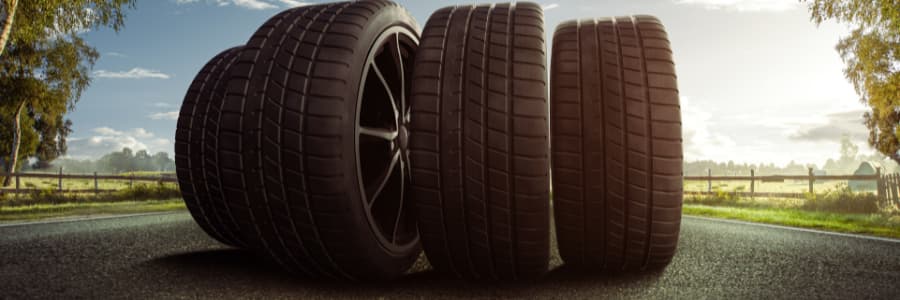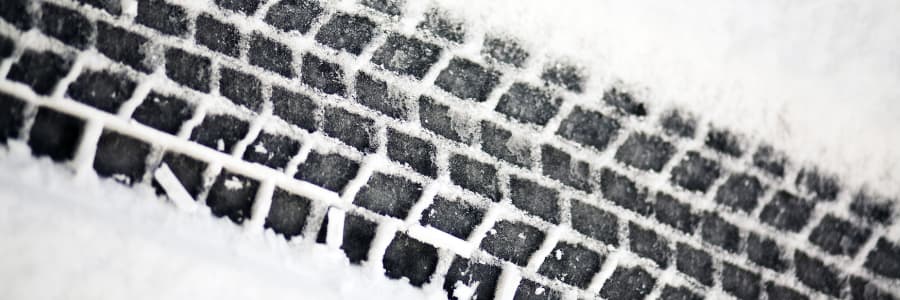Whatever one may think of it, the Hummer H2’s 6614 pounds (roughly three metric tons) indisputably puts it in the heavyweight division of cars. A new electric version adds 50%, weighing in at 9046 pounds (about 4.5 tons). The weight means that you, in some countries, need a small truck driver’s license to operate it. However, it still manages 0 to 100 km/h in about three seconds.
That kind of performance places great demand on the tires.
The electric Hummer is an extreme example, but many EVs face similar challenges where tires are concerned – not least during the winter. EVs are often heavier than fossil-fueled cars, have a different weight distribution, and have higher performance.
EVs’ torque and acceleration put virtually all petrol-powered cars to shame. Accelerations like that can, however, wear out the tires over time. In addition, their added weight and its distribution, with the bulk of the battery weight often located toward the rear tires, can lead to increased and uneven tire wear.
All of the above also applies to winter tires.
But does that mean that EVs inevitably wear out tires faster than their fossil-fueled cousins? And is there anything else you need to be aware of when it comes to electric cars and winter tires?
Before diving into the details below, our short answer is no to the first question and yes to the latter.

Depending on what electric car you have, there will be unique aspects to buying and fitting winter tires, such as limits to tire and rim size or fitting procedures.
However, some common features and considerations apply to almost all EVs.
One of them is the importance of ‘load index’ (roughly translates to load capacity). This tells you how much weight a tire can handle. The number appears on the outer edge of virtually all tires (you can read it and all the other numbers and letters you find on tires here).
To get a rough idea of what load index you need, take your vehicle’s weight and divide it by four. For example, if a tire has a load index of 90, it can support 600 kg (1323 pounds). Multiply that by four, and then you have tires that can carry a maximum of 2400 kg (5292 pounds). You can see a full load index table here.
Another key consideration is a tire’s rolling resistance, which is often extra important for electric cars. Lower rolling resistance equals more kilometres per charge. However, rolling resistance can influence other factors, such as the braking distance.
Winter weather can alter the dynamics and relationship between the factors mentioned above. For example, EVs’ batteries tend to drain faster during the winter months, making lower rolling resistance extra valuable. However, it is important to consider your driving conditions. Conditions like motorways or winding country roads make shorter braking distances extra important.
In short, our overall recommendation is that you primarily base your choice on your specific driving conditions.

When considering winter tires for electric vehicles, avoid changing over too early as it can wear the tires. Some may even consider going with all-year tires. While winter tires are not a legal requirement in many countries, there are plenty of reasons to invest in them – both for your own and others’ safety.
There are winter tires developed specifically for EVs and their unique characteristics. They are not cheap but can be well worth the investment, So before finding your calculator and annual budgets, it is important to know how long winter tires for EVs last.
This brings us to a broader discussion about EVs and tire wear. EVs are sometimes accused of wearing out tires much faster than petrol-powered vehicles. Some reports stipulate that EVs wear out tires up to 30% faster.
However, others disagree emphatically with that assertion. For example, Mikko Liukkula, the development manager at the tire manufacturer Nokia Tires:
“On my Tesla, 12,000 kilometres of driving last winter wore less than a millimetre on the winter tires,” he says.
He explains that the reason is, among other things, that modern electric cars have good control of traction and thus limit wear.
The truth is probably that much depends on how you care for the tires, not to mention how you drive. For example, hard accelerations will wear on the tires and lower your range. At the same time, a good eye on keeping optimal tire pressure and tire maintenance will help tremendously in minimising wear and maximising distance.
With that advice in mind, we believe that you can drive safely, comfortably – and not least far – on winter tires in your EV.
Taking the EV on a winter holiday? Read our tips and tricks to get the best EV winter holiday experience.